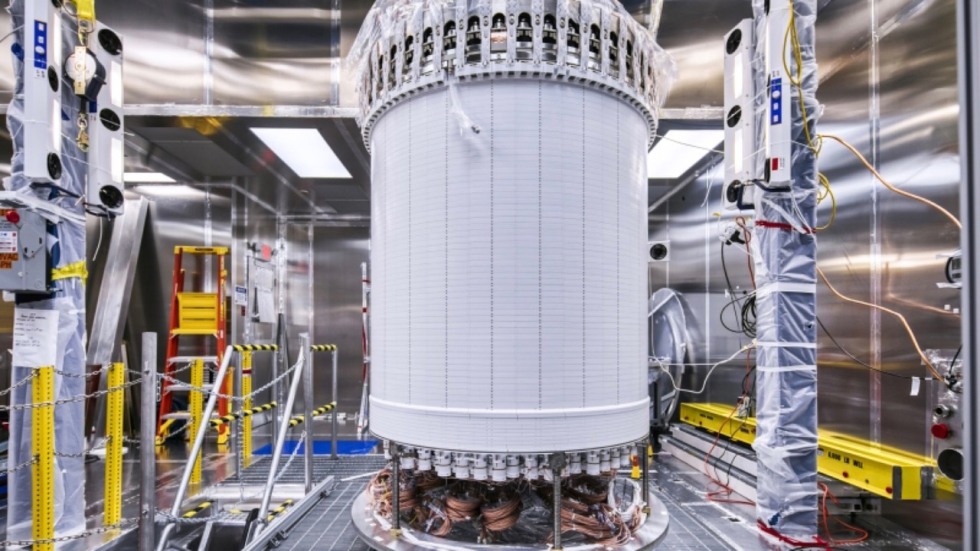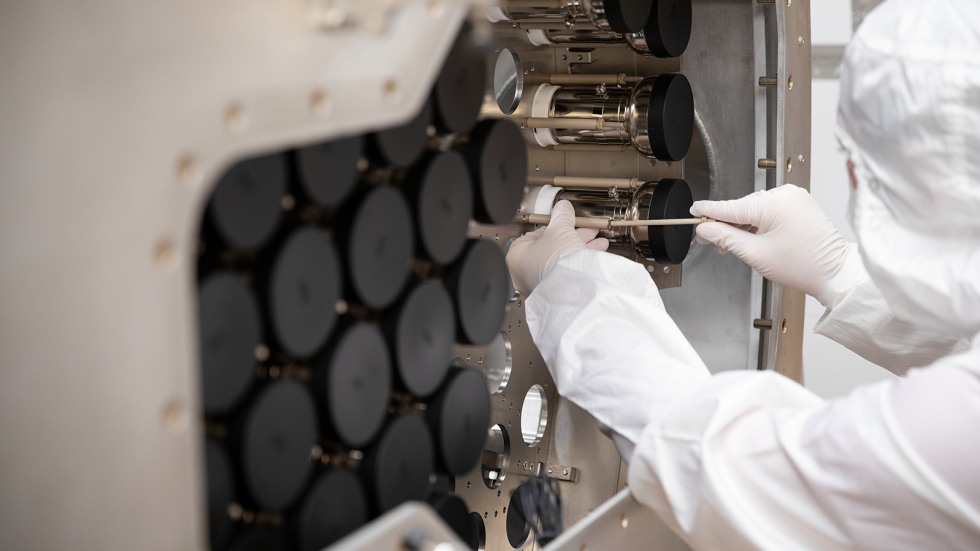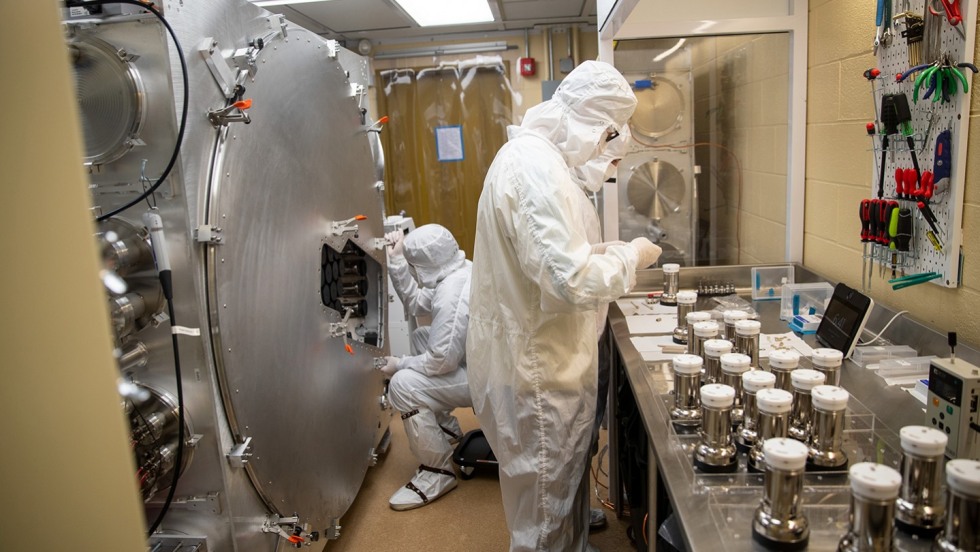PROVIDENCE, R.I., AND LEAD, S.D. — Deep below the Black Hills of South Dakota in the Sanford Underground Research Facility, an innovative and uniquely sensitive dark matter detector — the LUX-ZEPLIN experiment, led by Lawrence Berkeley National Lab — has passed a check-out phase of startup operations and delivered its first results.
In a study published on Thursday, July 7, the researchers behind the experiment report that with its initial run, LZ is already the world’s most sensitive detector of dark matter — the elusive particles thought to account for a majority of matter in the universe.
The take-home message from this successful start: “We’re ready and everything’s looking good,” said Kevin Lesko, a senior physicist at the Berkeley Lab. “It’s a complex detector with many parts to it, and they are all functioning well within expectations.”
The design, manufacturing and installation phases for the massive project are the product of an international collaboration of more than 250 scientists and engineers from 40 institutions — and a far-reaching group of faculty members, postdoctoral scholars, technicians, and graduate and undergraduate students from Brown University has played a major role in making the project happen. Together, the team is hoping to use the instrument to record the first direct evidence of dark matter, the so-called missing mass of the cosmos.
“This has been a monumental effort and many Brown doctoral, masters and undergraduate students, as well as postdocs and technicians, contributed,” said LZ experiment cofounder Richard Gaitskell, a Brown professor of physics and director of the Center for the Fundamental Physics of the Universe. “It’s amazing how much work we did in the labs and cleanrooms in Barus and Holley. This included building, testing and integrating more than 14,000 components for the two massive photodetector arrays for this unprecedented experiment.”
Brown’s role in making the massive detector a reality
Dark matter particles have never actually been detected. The leading theoretical candidate for a dark matter particle is the WIMP, or weakly interacting massive particle. WIMPs can’t be seen because they don’t absorb, emit, reflect or scatter light, but the particles are nonetheless fundamental to understanding the universe. For example, the presence of dark matter shapes the form and movement of galaxies, and is invoked by researchers to explain what is known about the large-scale structure and expansion of the universe.
The search for the elusive particles has a long history, with humans having speculated about invisible forms of matter as far back as Greek atomists in the fifth century BCE. To date, however, all attempts to observe it have failed, and the LZ collaboration is the most ambitious attempt to observe dark matter yet.
“So far, we have not seen a signal consistent with dark matter,” Gaitskell said. “But we have only run the experiment for 100 days. Already the results are more sensitive than the world’s best results by a significant factor. With the LZ experiment going on to run for 1,000 days, the next results will explore many new models for particle dark matter. We believe we are in a strong position to discover the universe’s missing mass.”


